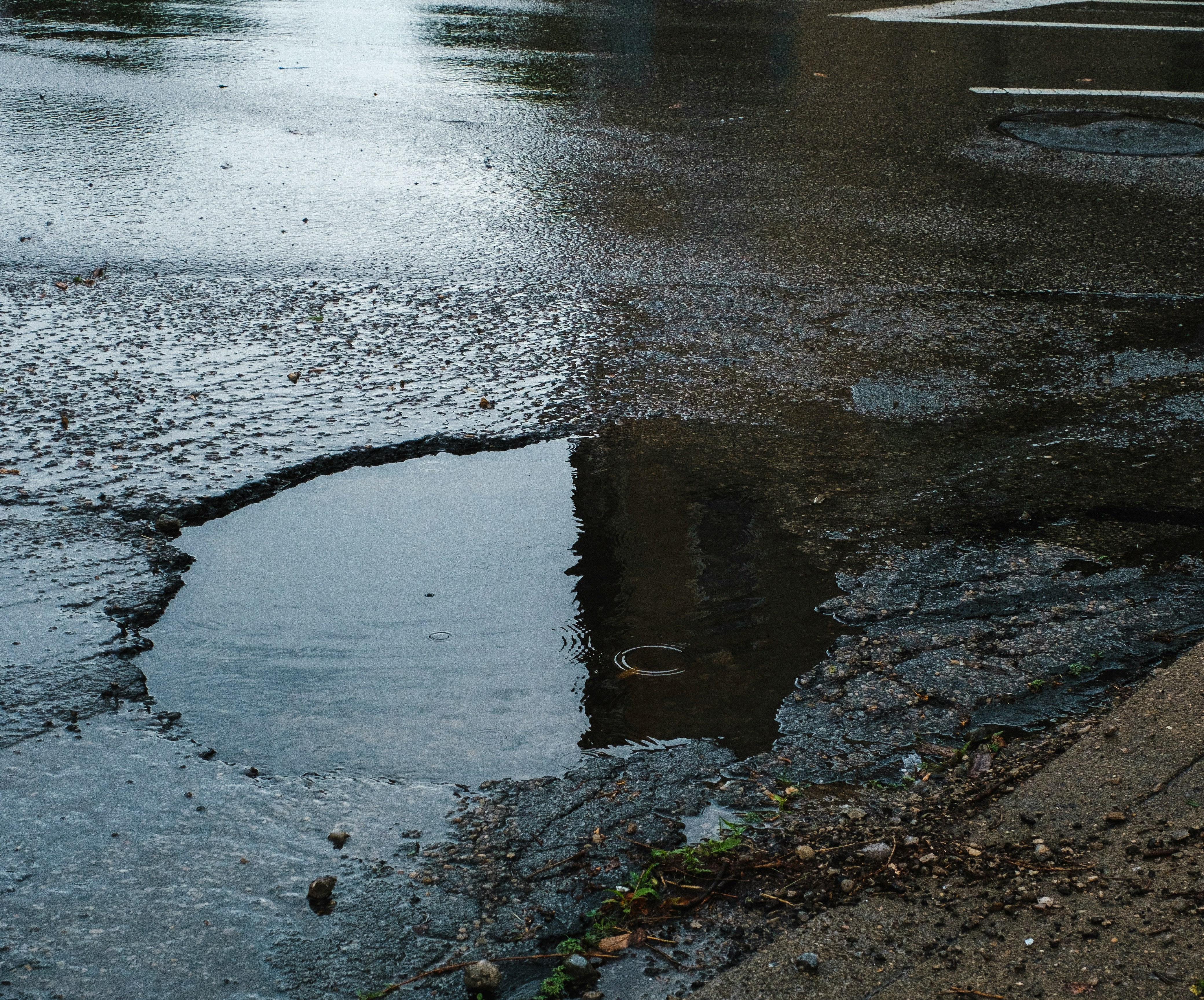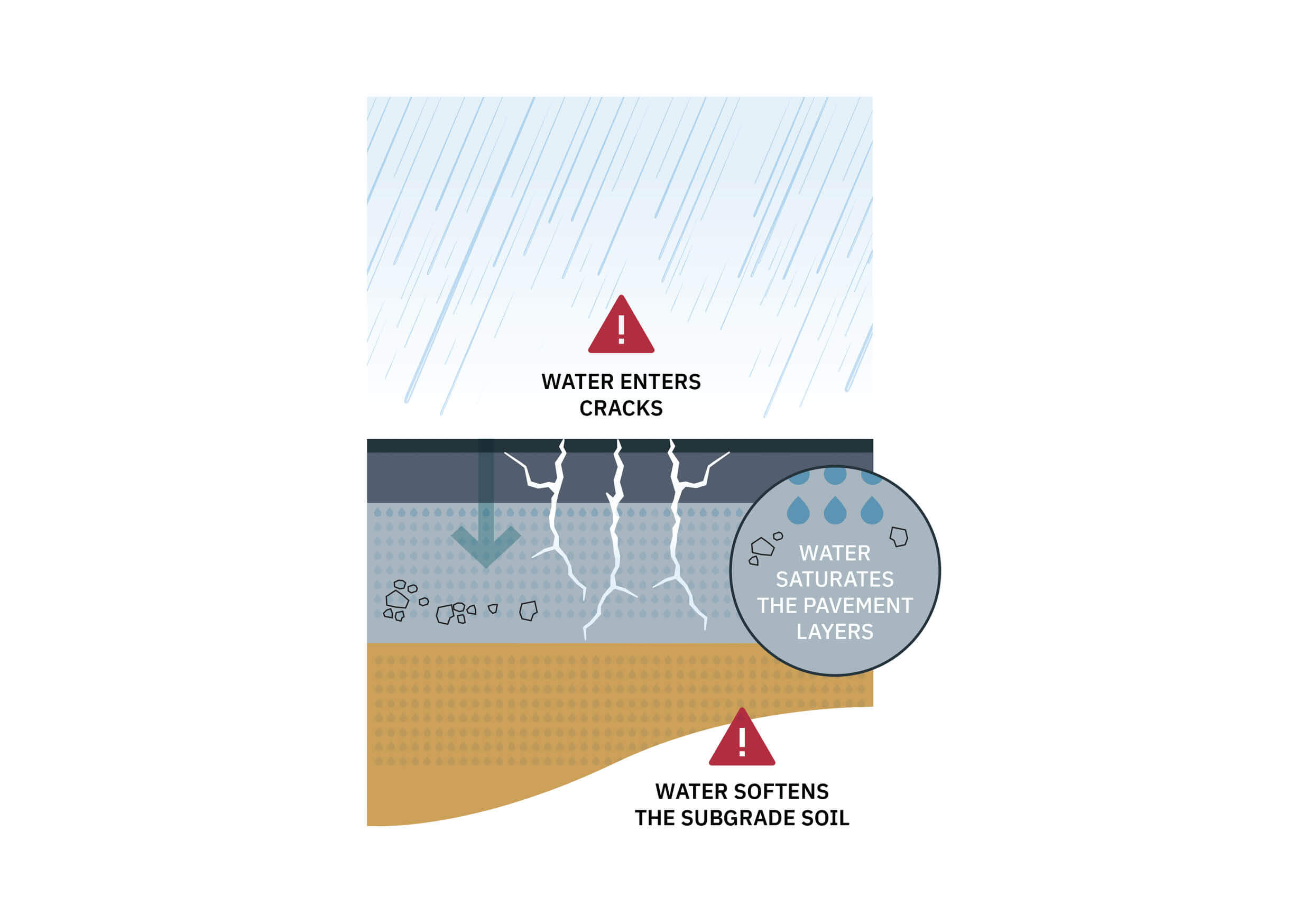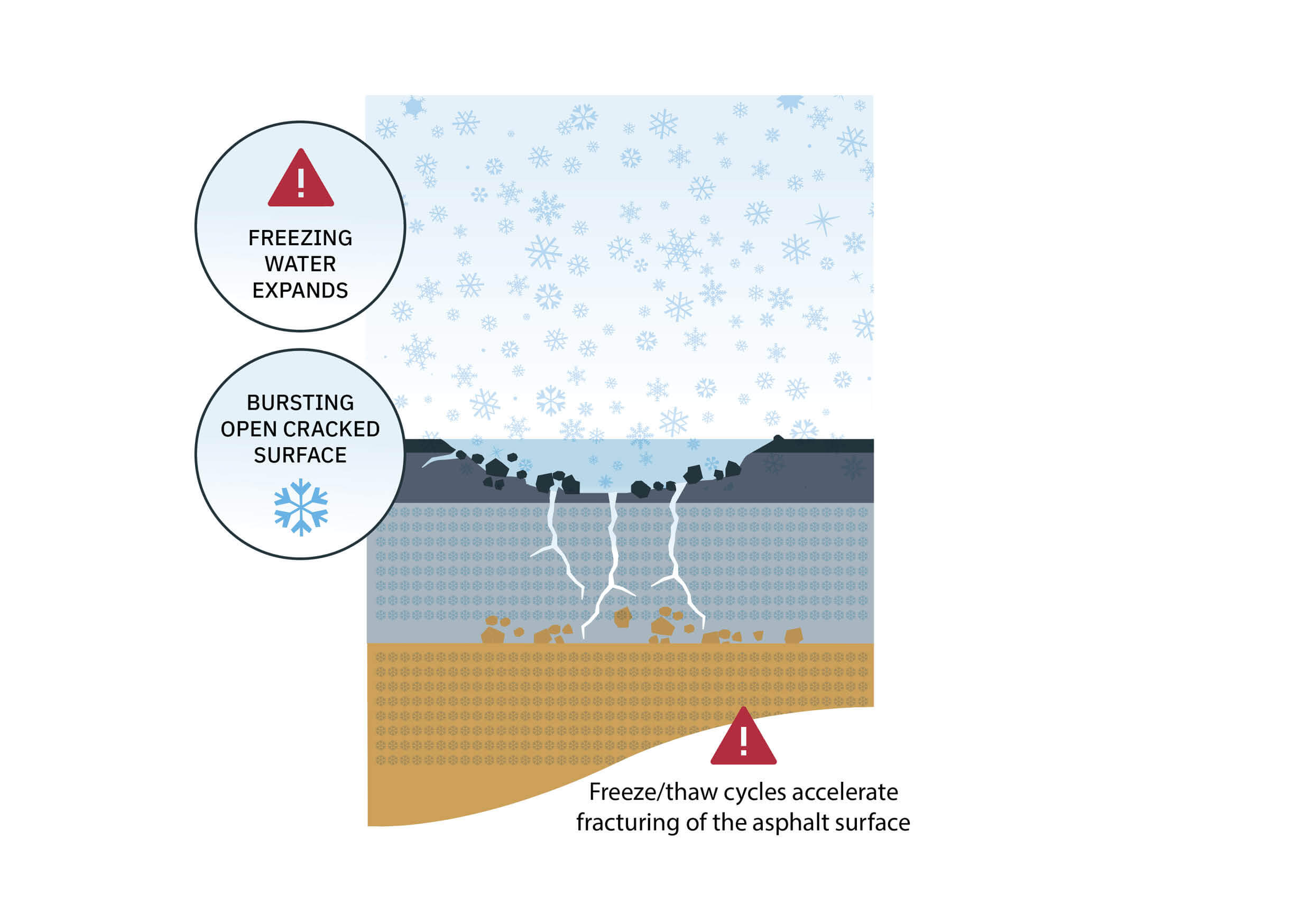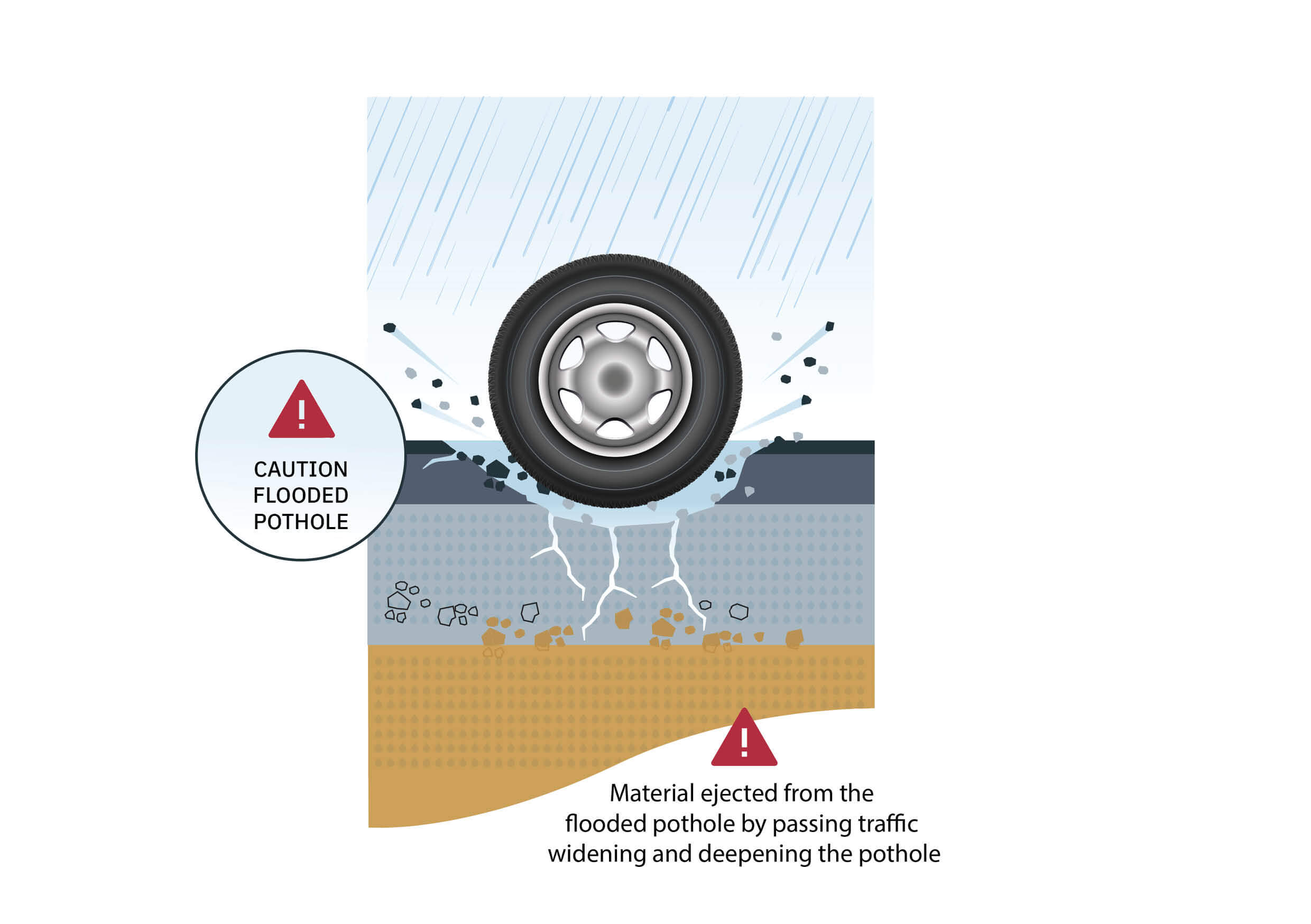What Causes Potholes?
Date: October 14, 2025
 If you're like most drivers, you've probably wondered: what causes potholes? Potholes are not only a serious problem for drivers, but they affect highway engineers in all climate areas and types of roads around the world. In this guide, we will explore how potholes are formed, the factors that contribute to these persistent problems, and what can be done to prevent them.
If you're like most drivers, you've probably wondered: what causes potholes? Potholes are not only a serious problem for drivers, but they affect highway engineers in all climate areas and types of roads around the world. In this guide, we will explore how potholes are formed, the factors that contribute to these persistent problems, and what can be done to prevent them.
What are potholes?
Potholes are areas of a road surface where the surface layer, usually asphalt, has developed cracks and then broken away under the repeated load of traffic passing over. This forms a hole with rough vertical sides. A pothole may begin with a few small cracks but can expand from just a few inches up to several feet wide and several inches deep if it isn't fixed right away. Potholes can occur in all road types, but are a problem particularly associated with asphalt surfacing.
Why are potholes called potholes?
The term "pothole" has an interesting history. The word ‘pot’ was used in late 14th-century English and is still common in Scotland and Northern England, where it refers to a deep hole, often linked to a mine or cave. By 1826, ‘pothole’ was used to describe geological features in glaciers and rocks. It wasn’t until 1909 that the term evolved to describe the potholes we know today.
How do potholes form?
Potholes are formed by three elements: surface cracks, water and traffic. Small surface cracks form and expand over time with the action of traffic. Water then seeps through the surface of the cracked pavement, causing further deterioration – in cold climates, this can be exacerbated by freeze-thaw weathering.
Ultimately, potholes arise from a complex interaction of these elements, and understanding this can help in creating strategies for pothole repair and prevention.
The five stages of pothole formation
So, how do potholes form? The process of pothole formation is complex, involving several stages that contribute to the development of these persistent road hazards. Below, we delve into the five key stages that explain how potholes form and what causes potholes to grow from small cracks into large, disruptive holes.
Stage 1 – Cracking of the road surface
The initial stage in pothole formation begins with the cracking of the road surface, typically due to fatigue in the asphalt. Fatigue cracking of the asphalt occurs due to an inadequate pavement structure. If the pavement layers lack the necessary strength and stiffness to handle the traffic loads, the pavement will flex under the pressure of passing vehicles. The repeated strain at the bottom of the asphalt results in the initiation of fatigue cracks in the asphalt layers. These are likely to appear as ‘alligator cracking’ where the surface breaks down into irregular blocks.
Other factors may also contribute to pavement cracking, including:
● Poor drainage: allowing the water to weaken the pavement structure.
● Ageing of the asphalt: makes the road surface more brittle and prone to cracking.
● Shrinkage cracking: caused by thermal movements or expansive clay subgrade soils.
● Reflective cracking: where a new asphalt layer has been laid over existing cracks and those cracks eventually reflects through to the surface. This can be minimized using an asphalt reinforcement interlayer such as the GlasGrid System
● Utility works: where poorly backfilled trenches can lead to surface cracking due to settlement.
Stage 2 – Water enters the pavement
Water seeps down through the pavement layers, saturating the aggregate subbase and base layers and softening the subgrade soil below. As it seeps deeper, it softens the underlying subgrade soil, further compromising the structrual integrity of the road.

Stage 3 – Traffic breaks down the pavement
Traffic loading begins to break up the fractured asphalt surface. Small blocks of asphalt are thrown out, initiating a pothole that then expands and deepens. Traffic-induced pumping action of water at the subgrade/subbase interface causes fine soil particles from the subgrade to contaminate the aggregate type, resulting in further pavement weakening and further increases in pavement flexing under traffic.
For effective solutions to improve road durability and reduce potholes, our subgrade stabilization solutions will strengthen the foundation layers and enhance overall pavement performance.
Stage 4 – Freeze-thaw weather worsens potholes
In colder climates, freeze-thaw cycles significantly speed up pothole formation. When temperatures drop, water in the pavement freezes and expands, opening up cracks and bursting the asphalt around the pothole. This leads to faster development and deeper potholes.

Stage 5 – Standing water completes the pothole formation
Water ponding in the potholes after rainfall scours and ejects material under the action of traffic, rapidly expanding and deepening the pothole.

Which part of the road is most vulnerable to potholes?
Potholes require the passage of vehicles to initiate and develop, so they will tend to occur under the wheelpaths. The exception will be where poorly backfilled utility works are the cause.The presence of water in the subgrade is another contributing factor. This is more likely to occur below the outer wheelpath closer to the road edge.
And why do potholes come back in the same places?
Pothole repair is usually a surface- only repair. The pothole is trimmed back and the hole filled with asphalt, compacted and sealed around the edges. This will not have addressed the underlying problem where fatigue cracking due to inadequate pavement thickness or poor drainage is the cause of the pothole. In such cases the pothole can be expected to re-appear, sometimes very quickly.
Why do potholes form most often in spring?
Freeze-thaw cycles are a significant accelerator in the formation of potholes. During the winter months, temperatures regularly dip below zero. Each cycle creates more damage to potholes, widening and deepening them. The result is that come spring, our roads are in a significantly worse state.
How to prevent potholes from forming
While much attention is focussed on the need to repair potholes – a never-ending cycle – highway engineers recognize the importance of constructing highways that can prevent potholes from forming in the first place. The key to achieving this is to build roads that are not going to develop fatigue cracking. The challenge is how to future proof road construction without inflating costs. This includes:
Increase pavement stiffness
Boosting the thickness of the asphalt base or granular subbase layers enhances the road’s ability to withstand traffic loads and reduces the likelihood of cracking.
Accurate traffic load predictions
Designing roads based on accurate traffic load estimates helps ensure they can handle long-term use without premature failure.
Optimize pavement design
Instead of simply adding more material, design engineers can optimize pavement designs by using a mechanically stabilized layer to strengthen the road while minimizing costs and environmental impact. Tensar offers solutions like Tensar InterAx geogrid and GlasGrid or GlasPave interlayers to enhance road durability with this method.
By implementing these strategies, we can build more resilient roads while reducing the need for constant pothole repairs.
What's next?
We have seen how most potholes are initiated by cracking of the road surface under the action of traffic. This fatigue-related cracking occurs when the pavement construction is insufficient for the true volume and loading from traffic using the road. Once potholes initiate, they rapidly expand under the action of traffic whenever water is present. This is further accelerated by freezing and thawing of water seeping into the pavement layers.
In most cases, it is the pavement structure that is the root cause of potholes. The construction may have been inadequate from the outset, but it is more likely that increased traffic loading now exceeds the original design or that issues with drainage below the road foundation have locally weakened the pavement. These problems require more than surface road repair and budgets may not stretch to reconstruction.
While significant sums will still need to be spent repairing potholes well into the future, the development of potholes in new road construction can be eliminated by optimizing the pavement design using mechanically stabilized road foundations and pavement layers that incorporate a stabilizing geogrid such as Tensar geogrid.
 Tensar+ design software enables you to design with Tensar geogrid, allowing you to compare material and evaluate project specs. For existing pavements, the recurrence of potholes in asphalt overlays can be delayed by the incorporation of a reinforcing asphalt interlayer.
Tensar+ design software enables you to design with Tensar geogrid, allowing you to compare material and evaluate project specs. For existing pavements, the recurrence of potholes in asphalt overlays can be delayed by the incorporation of a reinforcing asphalt interlayer.
To find out more about Tensar solutions, visit our geogrids for road, pavements and Surfaces page. If you’d like to submit a project or have an inquiry, head to our support page.



